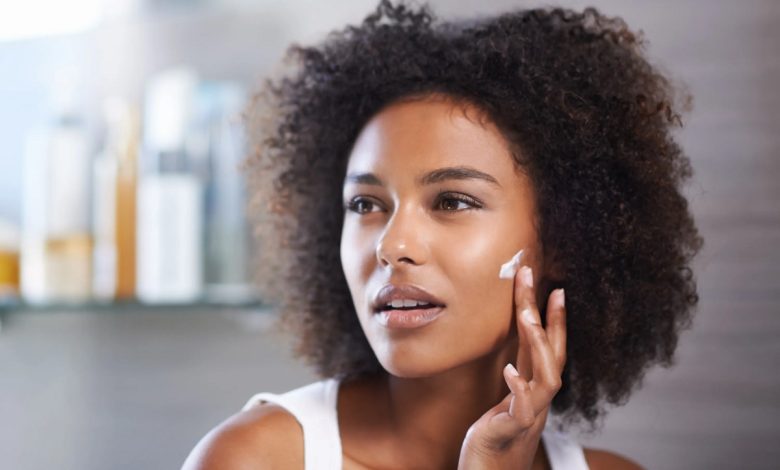Retinol Usage: Everything You Should Know About Retinol And The Best Tips You Did not Know

Retinol Usage: Retinol reduces the the tiny lines and wrinkles by stimulating the skin to produce collagen.
Everyone who is interested in the field of skin and beauty is familiar with retinol. This popular combination ingredient has been touted for a while now as the solution to smoother, younger-looking skin with fewer lines, but it’s not recommended without some caveats.
Retinol Usage, In fact, the European Union Commission has recently proposed stricter restrictions on this popular skin care ingredient – banning the use above certain concentrations to reduce adverse side effects. If retinol is used without proper precautions, breakouts, redness, and sensitivity are all on the list.
But what does this popular ingredient actually do when used safely, and why has it become so popular in the skincare industry? Well, we asked not one, not two, but four experts to answer all your burning questions, so read on to find out.
Retinol Usage
What Is Retinol?
Retinol Usage, “Retinol is a type of retinoid derived from vitamin E,” says Aruj Javid, a pharmacist working at Lookfantastic. This skin-beneficial combination has gained much attention because it can help improve many skin problems, including decreased skin firmness, tiny lines and wrinkles often seen in older-looking skin, acne-prone skin, uneven skin tone, and more. Overall skin that looks dull and lacks radiance.
Dr. Derrick Phillips, a dermatologist who specializes in acne, rosacea, rashes, and skin cancer, adds that “almost anyone can benefit from retinoids in their skin care regimen, and the key is to start small.” And gradually increase over time.”
Retinol Usage
What Does Retinol Do?

Dr. Jinah Yoo, dermatologist and medical director and founder of Maylin x Dr Jinah Yoo Skin Clinic, explains, “There are many benefits to using retinol in your skin care routine.
Retinol Usage, Retinol reduces the appearance of tiny lines and wrinkles by stimulating the skin to produce collagen, which helps improve skin elasticity and firmness, ultimately reducing the tiny lines and wrinkles. When used regularly, retinol also improves overall skin texture and results in smoother skin and a more even skin tone by increasing cell turnover and activity and exfoliation.
Dr. Hiba Injibar, dermatologist and founder of Dermasurge Clinic, added that retinol has been found to help “resolve problems such as dark skin spots or so-called hyperpigmentation.” So, if this is a major skin concern for you, retinol seems to be what you’re looking for.
Retinol Usage
How To Use Retinol?
Retinol Usage, Since retinol can be irritating, how and when it is used is a key factor. Javid stressed that the most important thing when using retinol is to slowly work it into your skin care routine. “If it’s your first time using retinol, start with a lower percentage ,” she says. “Remember that you only need a pea-sized amount each time you use retinol.”
Once you find the right product, Dr. Injibar advises, “start with two to three uses per week, gradually increasing the frequency of use according to skin condition.” Retinol is best used at night. “Wash your face with a gentle cleanser and pat dry before applying retinol—always apply retinol to clean, dry skin as this helps ensure maximum absorption,” adds Dr. Yu.
Retinol Usage, Dr. Yu continues: “Take a pea-sized amount and apply it gently on the face and neck. “After the retinol is fully absorbed into your skin, using a moisturizer will help prevent dryness and irritation.” And remember, “Using a sunscreen with SPF 30 or higher every morning is essential because retinol can increase skin sensitivity to the sun.” Additionally, it’s always recommended to test a new ingredient or product topically on a small patch of skin before adding it to your skin care routine, especially if it’s your first time.
Retinol Usage
Can You Use Hyaluronic Acid, Niacinamide Or Salicylic Acid With Retinol?
Retinol Usage, Of course, most of us have a collection of skin care products that target different skin concerns. While Vitamin C brightens, Hyaluronic Acid hydrates, and Alpha Hydroxy Acid (AHA) and Beta Hydroxy Acid (BHA) slough off dead skin cells to leave your skin soft and supple. But since retinol is an active ingredient, you have to be careful what you layer over or under it.
Dr. Yu stresses that it’s best to avoid combining retinol with other active ingredients because it can cause “severe irritation” to the skin. This is why experts recommend that when using retinol, the skin of the face should be clean and only apply moisturizer to help hydrate the skin. Therefore, it is better to use vitamin C serums in the morning and retinol at night, two to three times a week, and your other favorite skin serums on other days of the week to avoid any interference.
Retinol Usage, However, as we all know, moisturizers are sometimes not that simple, so make sure you double-check the ingredient list to see what it’s made of. By active ingredients, Dr. Yu means those that have been scientifically proven to work on the skin—such as vitamin C, salicylic acid, and glycolic acid.
Therefore, it is better to leave a suitable time interval between the use of these products and retinol, for example, use one in the morning, one at night or every other day. But hyaluronic acid and niacinamide are well-proven, and while they’re active ingredients, they’re gentle enough to help hydrate the skin, meaning they can even help reduce the drying effect of retinol on the skin.
Also Read:
Korean Skin Care Routine: The 10-Step Skin Care Routine Of Korean
Best Vitamins For Skin: From Vitamin D To Vitamin K
Skin Toner Benefits: What Is Skin Toner And What Are Its Benefits?




